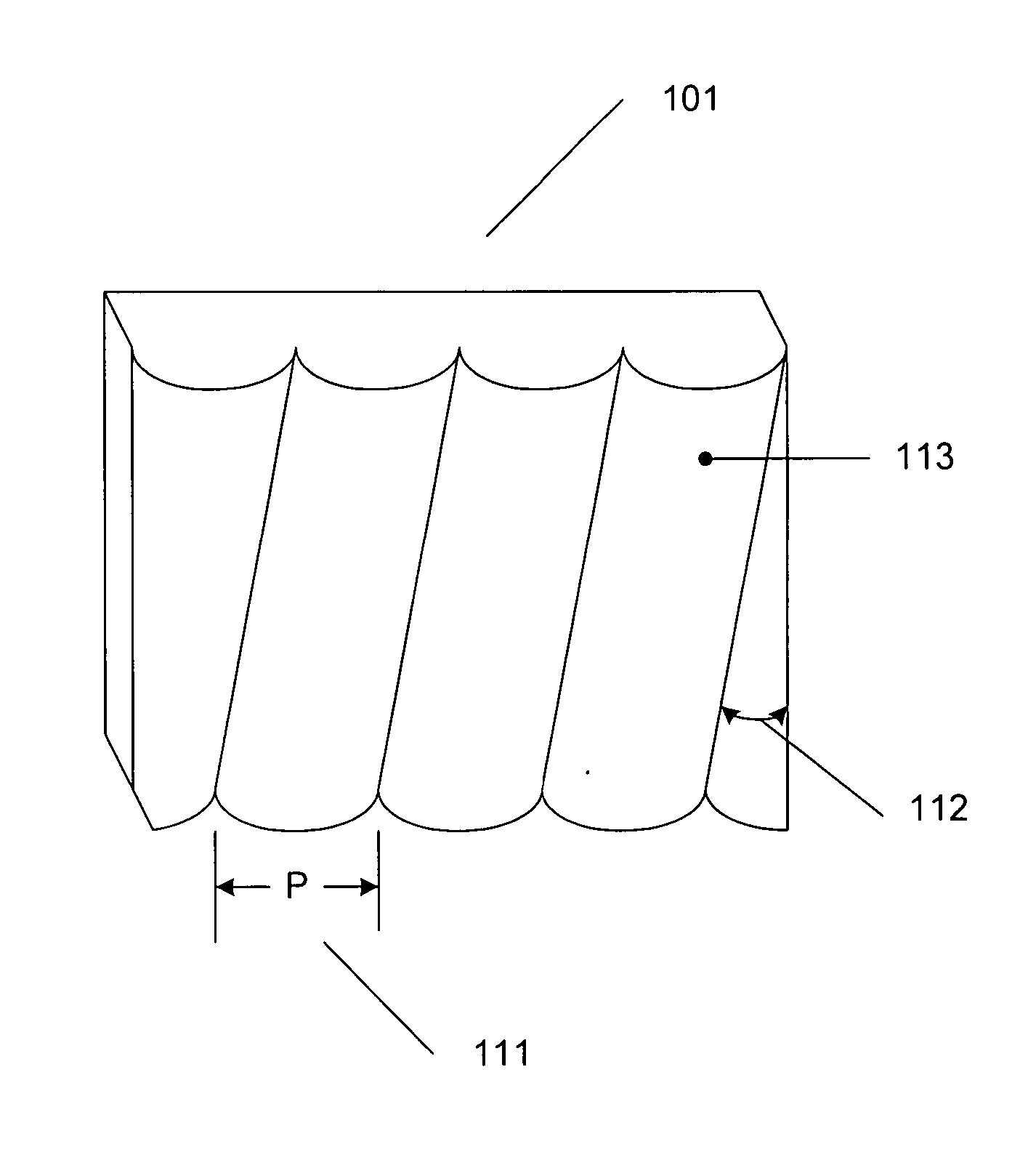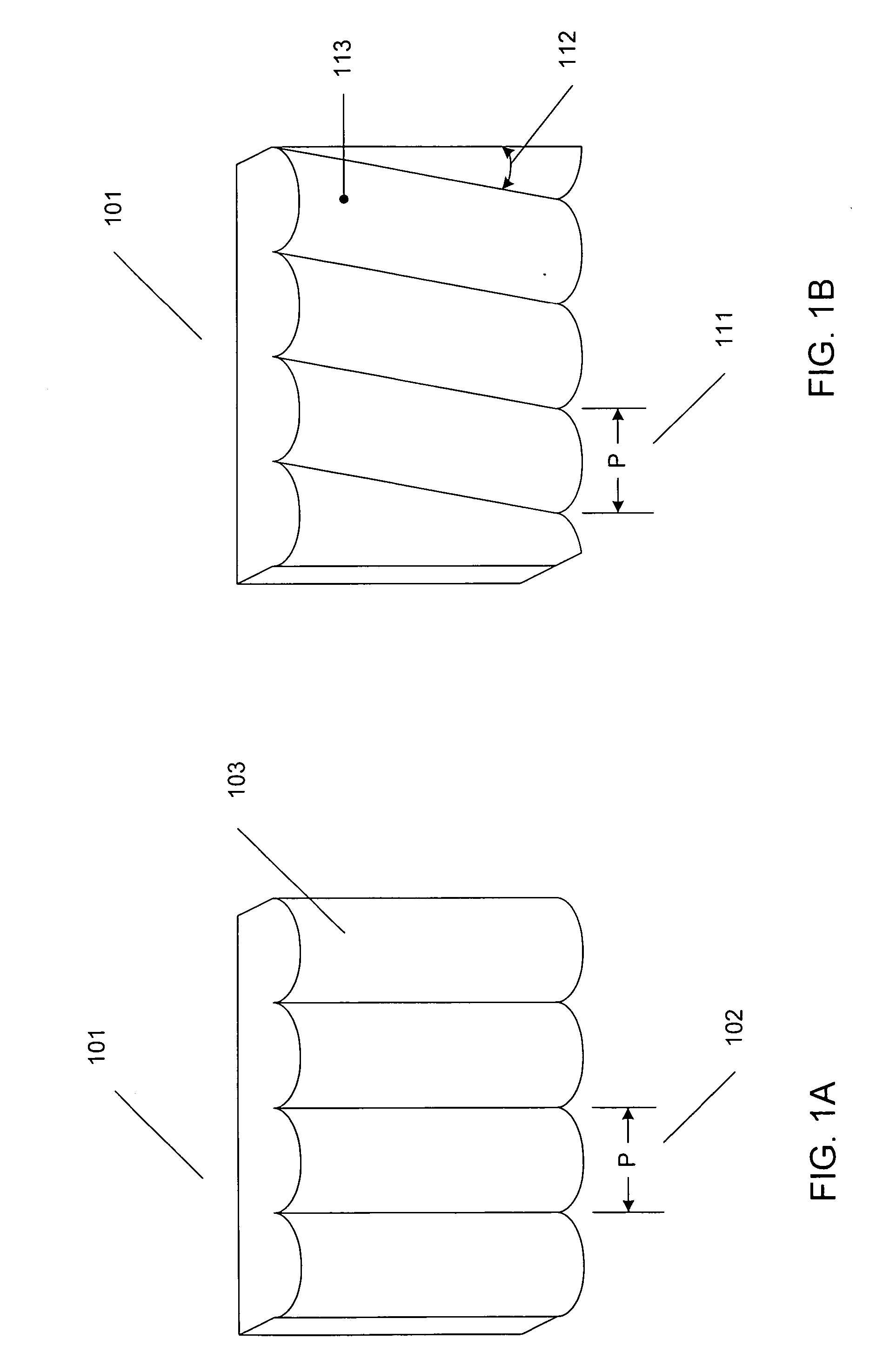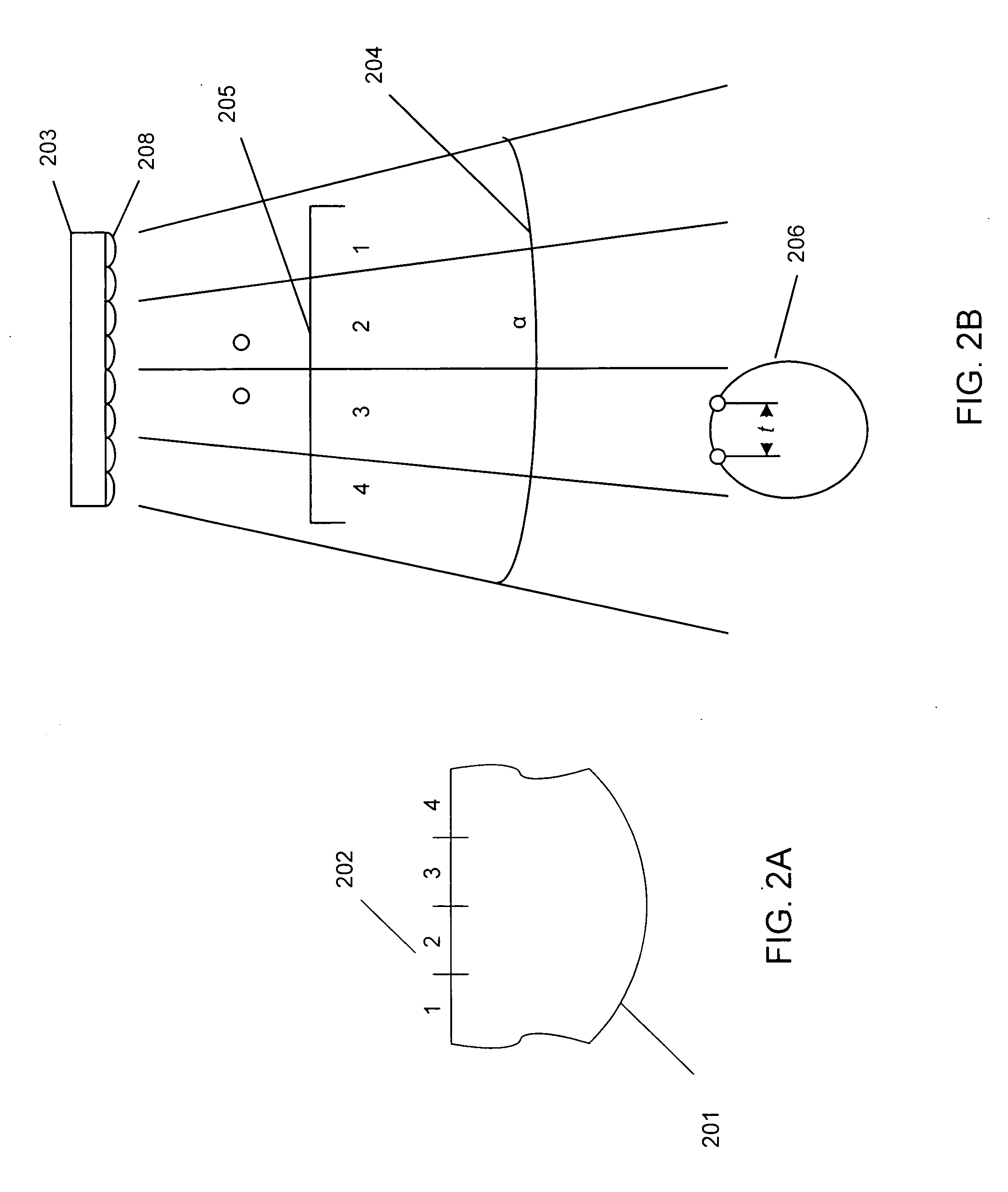Controlling the angular extent of autostereoscopic viewing zones
a technology of viewing zone and angular extent, applied in optics, instruments, electrical equipment, etc., can solve the problems of affecting the performance of panoramagrams commercially available in both scenarios, and affecting the quality of comparison images
- Summary
- Abstract
- Description
- Claims
- Application Information
AI Technical Summary
Benefits of technology
Problems solved by technology
Method used
Image
Examples
Embodiment Construction
[0019] The present design uses refractive semi-cylindrical lenticules of the types shown in FIGS. 1A and 1B. In such a construction, two related types of lens sheets are available, both having similar characteristics. Lenticular sheets or raster barriers enable viewing of a stereoscopic image without the use of individual selection devices (glasses) worn by the observer, and are optically interchangeable. The present teachings apply to both types of selection devices.
[0020] In order to see an autostereoscopic image, the observer must be within a certain distance range from the display, not too close and not too far. From too far a distance, the observer will see views with reduced perspective differences, as can be seen by comparing FIGS. 2B and 3B, as will be discussed more fully below. The strength of the stereoscopic depth effect is proportional to the interaxial separation between camera locations, said cameras existing in the visual world or a computer universe. The perspectiv...
PUM
 Login to View More
Login to View More Abstract
Description
Claims
Application Information
 Login to View More
Login to View More - R&D
- Intellectual Property
- Life Sciences
- Materials
- Tech Scout
- Unparalleled Data Quality
- Higher Quality Content
- 60% Fewer Hallucinations
Browse by: Latest US Patents, China's latest patents, Technical Efficacy Thesaurus, Application Domain, Technology Topic, Popular Technical Reports.
© 2025 PatSnap. All rights reserved.Legal|Privacy policy|Modern Slavery Act Transparency Statement|Sitemap|About US| Contact US: help@patsnap.com



